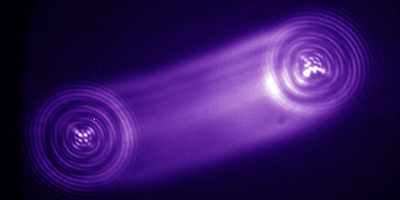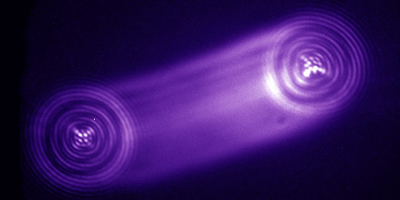Nanowire Lasing Explained
A nanoscale wire of zinc oxide can perform as a tiny ultraviolet laser at room temperature, but despite a decade of research, physicists have yet to reach consensus over what exactly produces this lasing. Now, new experiments and theoretical calculations reported in Physical Review Letters make the case that a traditional lasing mechanism is at the heart of zinc oxide nanolasers.
Zinc oxide is a semiconductor with a large band gap that makes it interesting for many electronic and optical applications. It has unusually stable excitons, which are hydrogenlike bound states between electrons and holes. Scattering by these excitons could be responsible for the room-temperature lasing observed in zinc oxide nanowires. However, some scientists instead contend that the electrons and holes in zinc oxide are in a free, “plasma” state. And therefore, like most semiconductor lasers, light is produced when the electrons and holes combine.
To sort out these two possibilities, Marijn Versteegh and colleagues from the Utrecht University in the Netherlands performed a series of experiments in which they varied the external laser pulse used to excite zinc oxide nanowires of various sizes. The measured electron-hole densities at the lasing threshold were too high for excitons to be present. Instead, the densities—as well as the laser emission spectra—were consistent with an electron-hole plasma. The team verified this with calculations based on a quantum many-body theory that they had recently developed to describe the optical properties of zinc oxide. – Michael Schirber





